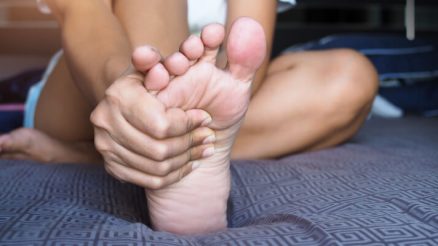Hiking is a fantastic way to connect with nature, challenge your body, and clear your mind. However, nothing can derail a beautiful trek faster than an agonizing foot injury. Our feet are the foundation of every step we take on the trail, and neglecting them can lead to pain, discomfort, and even long-term issues.
This guide will delve into common hiking foot injuries and, more importantly, equip you with the knowledge to prevent them, ensuring your adventures remain enjoyable and pain-free.
Common Hiking Foot Injuries
Before we discuss prevention, let’s identify some of the most frequent culprits that sideline hikers:
1. Blisters
Perhaps the most common hiking ailment, blisters are fluid-filled sacs that form on the skin due to friction, heat, and moisture. They can range from mildly annoying to excruciatingly painful, making every step a challenge.
2. Plantar Fasciitis
This involves inflammation of the plantar fascia, a thick band of tissue running along the bottom of your foot, connecting your heel to your toes. It often manifests as sharp, stabbing pain in the heel, especially with the first steps in the morning or after rest. Overuse, inadequate support, and tight calf muscles are common contributors.
3. Ankle Sprains
A common injury, especially on uneven terrain, an ankle sprain occurs when the ligaments supporting your ankle are stretched or torn. This can happen from missteps, falls, or landing awkwardly.
4. Achilles Tendinitis
Inflammation of the Achilles tendon, the large tendon connecting your calf muscles to your heel bone, often caused by overuse, sudden increases in activity, or improper footwear. Pain is typically felt in the back of the heel or lower calf.
5. Metatarsalgia
Pain and inflammation in the ball of your foot, particularly in the area where your toes meet your foot bones (metatarsals). This can result from ill-fitting shoes, high impact activities, or foot deformities.
6. Ingrown Toenails
When the edge of a toenail grows into the surrounding skin, causing pain, redness, and swelling. Tight shoes, improper nail trimming, and repetitive impact can exacerbate this.
7. Stress Fractures
Tiny cracks in a bone, often in the feet or lower legs, caused by repetitive force or overuse. These are more serious and require significant rest to heal.
How to Prevent Hiking Foot Injuries
Prevention is always better than cure. Here’s how you can proactively protect your feet on the trail:
1. Invest in Proper Footwear
This is perhaps the most critical step.
- Hiking Boots/Shoes: Choose footwear specifically designed for hiking that offers good ankle support, adequate cushioning, and a sturdy sole with good traction.
- Fit is Key: Ensure your shoes fit properly. There should be about a thumb’s width between your longest toe and the end of the shoe, and your heel should not slip excessively. Try on shoes in the afternoon (when your feet are slightly swollen) and with the type of socks you’ll wear for hiking.
- Break Them In: Never wear brand new boots on a long hike. Break them in gradually with shorter walks to allow them to conform to your feet and prevent hotspots.
2. Choose the Right Socks
Good socks are as important as good shoes.
- Material: Opt for moisture-wicking materials like merino wool or synthetic blends. Avoid cotton, which absorbs sweat, stays wet, and increases friction, leading to blisters.
- Fit: Socks should fit snugly without being too tight or too loose, which can cause bunching and rubbing.
- Layering (Optional): Some hikers prefer a thin liner sock made of a wicking material underneath a thicker hiking sock to further reduce friction.
3. Prepare Your Feet
Don’t just hit the trail without some foot TLC.
- Trim Toenails: Keep toenails trimmed straight across, not too short, to prevent ingrown toenails and discomfort from rubbing against the front of your shoes.
- Moisturize: Regularly moisturize your feet to keep the skin supple and less prone to cracks and blisters.
- Address Calluses: While some calluses are protective, excessive ones can cause pain. Gently file them down if they become too thick.
- Strengthen Feet and Ankles: Incorporate exercises like calf raises, toe curls, and ankle rotations into your routine to build strength and stability.
4. Lacing Techniques
How you lace your boots can significantly impact comfort and stability.
- Custom Lacing: Learn different lacing techniques to address specific issues (e.g., heel lock for slipping, window lacing for pressure points).
- Proper Tightness: Don’t lace too tight, which can cut off circulation, or too loose, which allows your foot to slide around.
5. Take Care on the Trail
Mindfulness during your hike can prevent acute injuries.
- Watch Your Step: Pay attention to the terrain. Uneven ground, roots, and rocks are prime ankle-turning hazards.
- Pace Yourself: Don’t push too hard, especially on inclines or difficult terrain. Fatigue increases your risk of missteps.
- Regular Breaks: Take short breaks to rest your feet, adjust socks, and inspect for any developing hotspots.
6. Blister Prevention and Treatment
Even with the best prevention, blisters can happen.
- Pre-Taping: If you know you’re prone to blisters in certain spots, tape those areas with athletic tape or moleskin before you start hiking.
- Early Intervention: If you feel a “hot spot” developing, stop immediately. Apply moleskin, duct tape, or a specialized blister plaster over the area to reduce friction.
- Treating Blisters: For unbroken blisters, you can drain them with a sterilized needle if necessary, but it’s often better to leave them intact to prevent infection. Cover with a sterile dressing. If a blister breaks, clean it gently with antiseptic and cover it.
7. Post-Hike Recovery
Your feet deserve care after they’ve carried you miles.
- Elevate Your Feet: Helps reduce swelling.
- Stretch: Stretch your calves, hamstrings, and feet (e.g., plantar fascia stretches).
- Massage: A gentle foot massage can improve circulation and reduce soreness.
- Cool Down: If swelling persists, apply ice packs (wrapped in a cloth) for 15-20 minutes.
When to Seek Professional Help
While these tips cover most common scenarios, don’t hesitate to consult a medical professional (doctor, podiatrist, physical therapist) if you experience:
- Severe pain that doesn’t improve with rest.
- Inability to bear weight on your foot or ankle.
- Significant swelling, bruising, or deformity.
- Recurring pain despite preventative measures.
Conclusion
Your feet are your most important tools on any hiking adventure. By paying attention to proper footwear, preparing your feet, being mindful on the trail, and allowing for adequate recovery, you can significantly reduce your risk of injury. Happy trails, and may your feet carry you far and wide!








